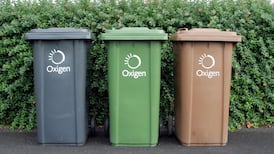Millionaire businessman Eddie Haughey, who was killed along with three other men in a Norfolk helicopter crash, was suing its manufacturers about alleged faults.
The case, taken by Mr Haughey’s company, Haughey Air Limited against Agusta Westland, came before Judge Mackie at the Commercial Court in London in late February, according to court records.
The legal action began last September, where Mr Haughey demanded repayment of the full cost of the helicopter because of a series of faults that kept it on the ground for 85 days of repairs.
High Court documents report that he alleged that the Agusta Westland had suffered a series of defects and reliability problems, including a hole in one of its blades and gearbox oil leaks.
Air accident investigators are expected to spend days gathering remnants of the helicopter which crashed near Gillingham on Thursday, killing Lord Edward Haughey and three other men.
A hugely successful businessman, Dundalk-born Mr Haughey was the second person to have been both a member of the Oireachtas and the British House of Lords, where he sat as Lord Ballyedmond. He was appointed to the Seanad by Albert Reynolds in 1994.
A series of witnesses report hearing a loud bang, followed by the sound of an engine winding down seconds before the Agusta Westland AW139 crashed shortly before 8pm.
The AW139 medium twin helicopter was bought in 2011 and delivered a year later and flew Mr Haughey regularly between his homes in Northern Ireland and Norfolk.
The helicopter model has a top speed of 165 knots (306 km/h), a range of nearly 1,000 kms and can fly for up to five hours, according to its manufacturer.
The crash site is 150-200 square metres, Norfolk Constabulary said yesterday, covering parts of a ploughed field and a main road, near a roundabout.
Three of the four crash victims were officially named: Mr Haughey; his estate foreman, Declan Small and Carl Dickerson from Lancashire. The fourth man has been named locally as Lee Hoyle.
Police ruled out any suspicious circumstances that could have led to the crash, before handing over to the UK Air Accidents Investigation Branch (AAIB). The bodies of the men were taken from the scene as darkness fell yesterday, while all roads, bar one, that had been closed for nearly 24 hours were reopened.
One witness, Michael Tabby, said he and a friend were standing outside a McDonald’s branch at the roundabout when they heard a helicopter “coming in quite low.
“It sounded like it was in difficulty and was trying to land,” he said, but it then crossed the road. “There was a loud bang followed by the sound of an engine winding down.”
The Gillingham tragedy comes just two months after four United States air crew from RAF Lakenheath were killed when their Pave Hawk helicopter crashed during a low-level training flight nearby.
The work of the rescue crews was hampered by heavy fog, though locals said it “wasn’t that bad” at the time of the crash – “just patchy, it only got worse about an hour after the crash happened,” said one.












